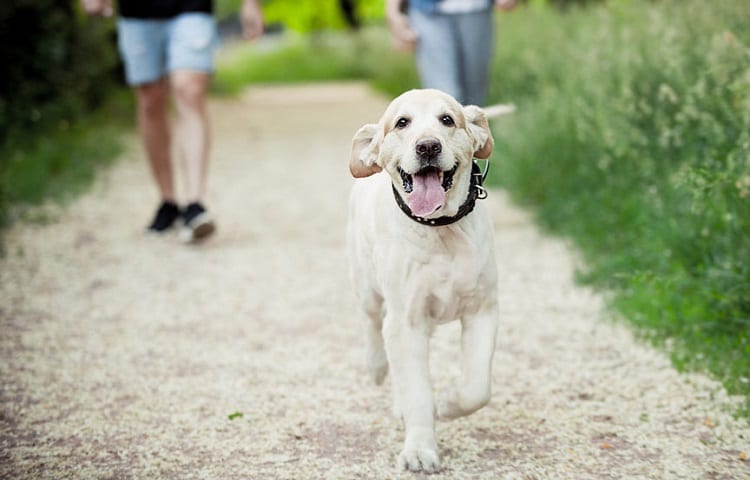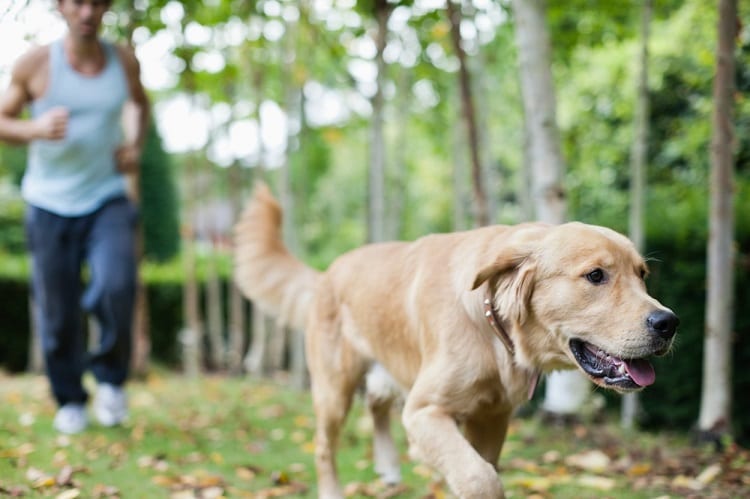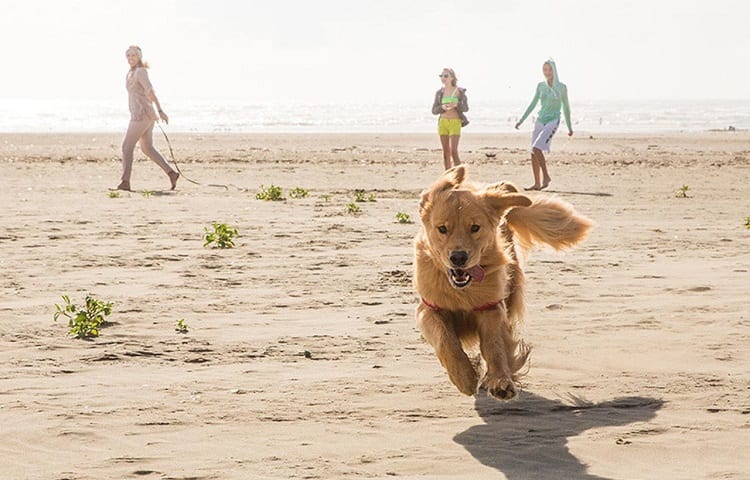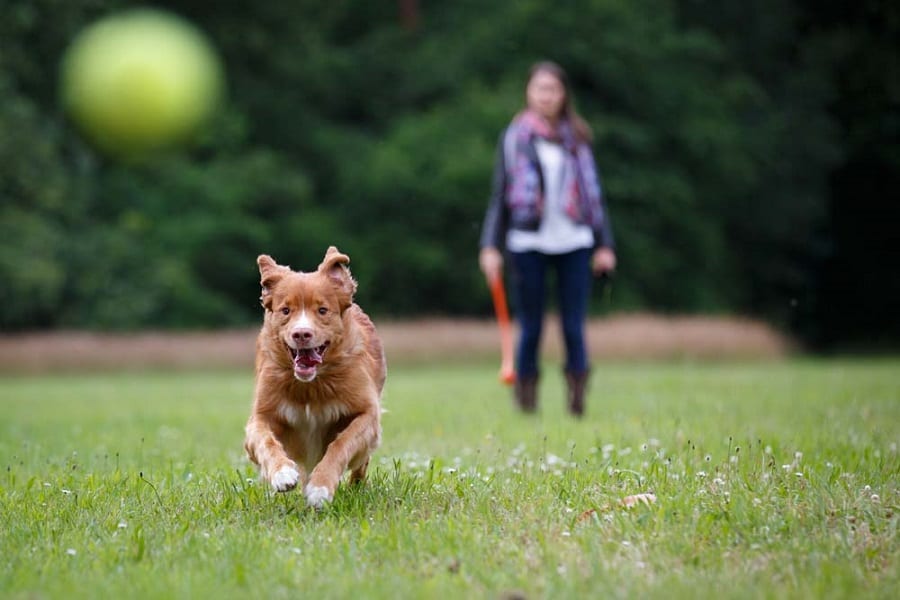This post may contain affiliate links. Please read my disclaimer policy
They say the best things in life are free, and if you tell that to a dog who’s recently had their leash removed from them, they’d have to agree.
The freedom a canine feels when they’re finally able to run wild and get the freedom they’ve been dying for can’t be beaten, but it’s all fun and games until it’s time to get them back into line.
For many owners, learning how to retrieve a dog off-leash is one of the biggest challenges they face. However, this problem is usually traced back to the owners themselves, and behaviors they’ve allowed in the past or poor training that has led to this conduct.
How do you get a dog back once it’s off its leash?
The easiest way to get a dog back to you once it’s off the leash is by calling it, but if it’s not trained to return, you may need to persuade it with treats. Dogs need to be instructed to understand what’s required of them, and in most cases, it’s some simple training that can make it easier to have them come when called.
If you have a dog that loves nothing more than some off-leash antics but fails to come back to you when you want them to, we’re here to help. We have some tips for training and methods that can help them return when called, making it a lot easier to let them be free and enjoy the outdoors to its full potential.
Contents
The Benefits of Letting Your Dog Off the Leash

All you have to do is take a quick trip to the local dog park to see how much canines enjoy being free and clear of anything that’s holding them back.
There are lots of benefits to letting your dog go off-leash, provided you’re able to get them to come to you when you want, including:
Burning off energy
When your dog is off the leash, they can let go to their full potential and burn off all of that energy they save up by being at home.
A dog on a leash is forced to go the same pace as their owner and only explore the places you walk them, and without it on, the sky is the limit. This can be especially helpful for dogs with destructive tendencies and those prone to barking, as it wears them out and prevents boredom.
Building confidence
Your dog is an animal, and no matter how domesticated they might have become, they still need to get a sense of nature and find their place in the world.
By letting them off the leash, you’re giving them the confidence to learn their surroundings and figure things out for themselves.
Better exercise
A dog running free in a park or swimming in a lake is going to get a much better workout than walking at a slow pace alongside you.
Allowing them to run as fast as they can, work out more of their muscles, and hone some of their instincts is the best form and more natural form of exercise a dog can get.
Socialization
Early socialization is a must with many dog breeds, particularly those that can be wary of other dogs.
Giving the dog freedom to meet and greet with other dogs in a safe and friendly environment is the best thing you can do for their socialization skills and it prevents future run-ins with others that can be caused by not allowing them to mingle when they’re young.
Why Do Dogs Refuse to Come Back?

You’ve decided to give it a try when you’re at the park and unclip your dog to see how far he wanders.
He runs off at warp speed and when you call for him to return, he either looks at you and continues what he’s doing, or ignores you altogether.
The reason for this behavior is usually due to improper training, and most of the responsibility is with you as the owner. Dogs don’t simply come to their name without being taught to do so, and if there’s already a lack of respect or authority in the relationship you have with your pooch, you’ll find it very hard to have them do anything you say, let alone return to be hooked back up to their leash.
Other causes for this behavior is that they simply don’t care enough to return, as whatever they’re doing has piqued their interest far more than you have. In this case, you’ll need to up the ante and offer a treat or something else to have them want to come back to you.
For dogs that have been mistreated, they may not want to return purely out of fear, and perhaps they are worried you’ll punish or hurt them, or they’ve had a bad experience in the past. This can be common behavior with rescue dogs who didn’t have the best start in life, and it can be worked out of them with patience and a lot of love.
Establishing Good Behavior
When you’re in the training stages of owning a dog and want to work on this specifically, you’ll need to practice them coming to you when called.
With this skill in your back pocket, a dog running away from its owner will be less frequent, as they’ll understand what’s required of them.
- Move a few feet away from your dog and hold out a hand with treats inside, encouraging them to come and touch it with their nose using a phrase like “here” or “come here”.
- Once they’ve done so, give them the treat and pat them on the head.
- Move a few more feet away and repeat, each time saying the same phrase and rewarding them when they come to you.
Tips for Catching a Runaway Dog

If your dog has managed to escape and you’re out in public, there’s no need to panic.
These are some simple tricks you can use to get them to return to you without a fuss, and without having to get angry.
- Never chase a dog as this can make them more excited or scare them, and turn the whole endeavor into a game.
- Bring treats to the park and show them that you have some which may entice them to return.
- Stay calm and don’t raise your voice or get angry. They won’t want to return to an owner who is being aggressive.
- Turn away from your dog and ignore them, maybe even walking a bit away. This works like reverse psychology and they may instinctively follow you.
- Try using the command word you’ve been practicing, and as soon as they come back to you, offer them a treat and praise.
- Keep your voice high pitched and happy so that it never appears you’re angry. Offer them praise even if they’re far away and not listening.
Related Questions
A daily walk is something that every pooch needs but if you let them off their lead and are only repaid with a dog that won’t listen or come back, you’re probably sick of it.
This is just one part of dog ownership that requires some work, so we’ve answered some other common questions that can give you further insight into your pet and how they operate.
Why Should I Use a Dog Harness?
The two main reasons for using a dog harness are greater comfort for the dog and better control of the animal from the owner. A harness sits around their chest rather than their neck, so the pressure is spread out evenly.
With larger dogs especially, having control of more of their body this way can make it easier to lead them and stop them from straying too far away.
How Long Should I Walk My Dog?

There are a few factors to consider to determine how long your dog needs to be walked, including their breed, energy level, health conditions, and age.
In general, you can walk a dog between 20 minutes to two hours a day, and preferably splitting the time up into a few shorter walks to keep them busy and not overdo it.
Is It Okay to Not Walk Your Dog Every Day?
A dog requires physical stimulation and exercise, just like every other living animal, but as their owners, things happen sometimes that prevents us from being able to walk them every day.
As long as this isn’t a continual habit and they’re still walked a few times a week, some dogs will be okay without this form of exercise. However, you should make an effort still to keep them active with games like tug of war or throwing a ball.

